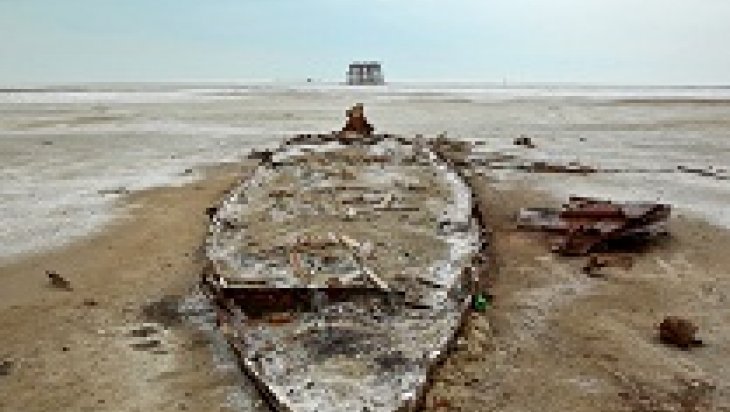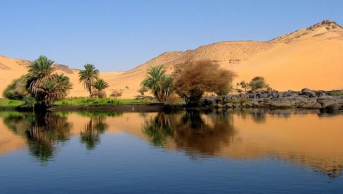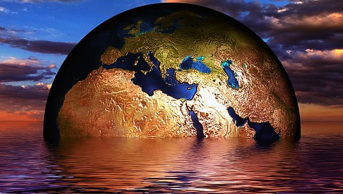Water Crisis of Iran and its Possible Ramifications

For Iran, 2014 was a period that the continued water crisis in the country has further exacerbated. It could be anticipated that 2015 would be similar. This is because, although generally 'water-scarce' years were followed by 'water-abundant' ones, in Iran’s case, there is a more fundamental problem.
In the west of Iran, the Lake Urmia has gotten considerably smaller in recent years. Drought conditions accompanying excessive water use in the basin have been the biggest reason for this. There have been serious events related with the deterioration of the Lake Urmia during 2011 and 2012. It has been reported by media that tens of people had been arrested during the events. It could be expected that -given the Kurdish presence in the area and the delicate balance that it creates- the irreversible shrinkage of Lake Urmia would not be solely confined to the matter of water.
On the other hand, it is worth analyzing closely the developments in Afghanistan associated with Helmand River, in the west. Despite the existence of a bilateral water sharing agreement between two countries dating back to early 1970s, events in Afghanistan - in particular the problematic course of Iran-Afghanistan relations during the Taliban domination and post-Taliban developments- created a period where stipulations on a regular water flow in the aforementioned agreement (26 cubic meters per second) were not observed. During this period, it is acknowledged that there has been substantial internal movement of people out of the area towards urban centers in Iran. The biggest impact of migrations, perhaps, was the additional burden they caused to the already strained infrastructures of cities. One of the other impacts of the population movements was that the deserted lands in rural areas caused an increase in the intensity of the sand storms in the region.
Tehran is the main locus of water scarcity in Iran. In September 2014, news about the water flow to big water users was cut off for several hours were followed by officials’ statements that the water scarcity has reached the critical point in the whole country. In essence, Iran is not very poor concerning the net water availability, especially with respect to Middle East. There are places in Iran like the Caspian coastline which receive around 2000-2100 millimeters of precipitation annually, and there are inland areas which receive not more than a mere 50 millimeters per year. Per capita renewable water availability stands at 1600-1700 cubic meters. This figure is more than nearly all Middle Eastern countries, including Turkey. However, continued population increases and concomitant unbalanced population distribution across the country, and existence of very densely populated urban agglomerations like Tehran cause difficulties regarding water supply to these centers.
We also know that weak water streams in central parts of Iran have already dried up due to mismanagement of water resources. Also in this area, it has been recorded that number of wetlands has been lost. Regarding water, this part of Iran has been among the most critical regions in the country.
Population of Iran has nearly doubled during the two decades following the Islamic Revolution despite the Iran-Iraq War. Tehran’s population in 2010 represented a more than sixfold increase compared to the number in mid-1950s. Number of people per square kilometer is more than four times of the figures observed in Istanbul, a city comparable to Tehran in terms of absolute populations. There are similar increases in other centers, too. Iran has now been a predominantly urbanized country. Instead of a spatially scattered rural-based population structure which was able to be supplied with nearby water resources, now, there are densely populated urban centers in need of hundreds of thousands cubic meters of water daily. Iran’s water management policy was not able to catch up with this rapid transformation. We also learn another reason for actual water scarcity from the numbers demonstrating the substantially wasteful use of water resources. In Tehran, for instance, despite the dangerous levels of water scarcity, per capita daily water-use reaches to 400 liters, nearly four times than people in similar water-scarce regions use. Lastly, it is necessary to highlight that the water losses from leaky infrastructure are huge. Nearly one-third of water has been lost because of infrastructure-related problems. All these statistics signify unsustainability with regard to water management.
At this point, it could be argued that Iran’s main approach is based on augmenting the water supply, rather than demand management strategies, including water pricing (such as taking into account of the 'full-cost-recovery' principle with an aim of covering the repairing cost of the aging infrastructures). Within this context, sooner or later, Iran’s water problem will likely to make it focus more on supplying water from distant sources, i.e. inter-basin transfers. Initial steps of such a policy were a project (and suspension of it due to protests) to transfer water from Khuzistan -a region in southwest where Arabs form one third of the population- to central Iran.
It will cause multidimensional impacts if this and similar projects are realized, and waters from the transboundary basin of Euphrates-Tigris are intended to be transferred to inland areas where water scarcity prevails most. There are already a big number of dams on the Tigris tributaries. When this relatively new 'inter-basin water transfer' policy gains currency in the Euphrates-Tigris basin, there could be new tensions in the region which has already been an uneasy equation in terms of water politics. Turkey, which has partly based its strategy on the utilization of relatively abundant waters of Tigris among the riparian countries (Syria and Iraq) in order to ease the stress in the Euphrates-Tigris basin as a whole, may now start to discuss a new approach which may accommodate this emerging possibility.
This article was published in Ortadoğu Analiz journal with the title of "Water Crisis of Iran and its Possible Ramifications”









